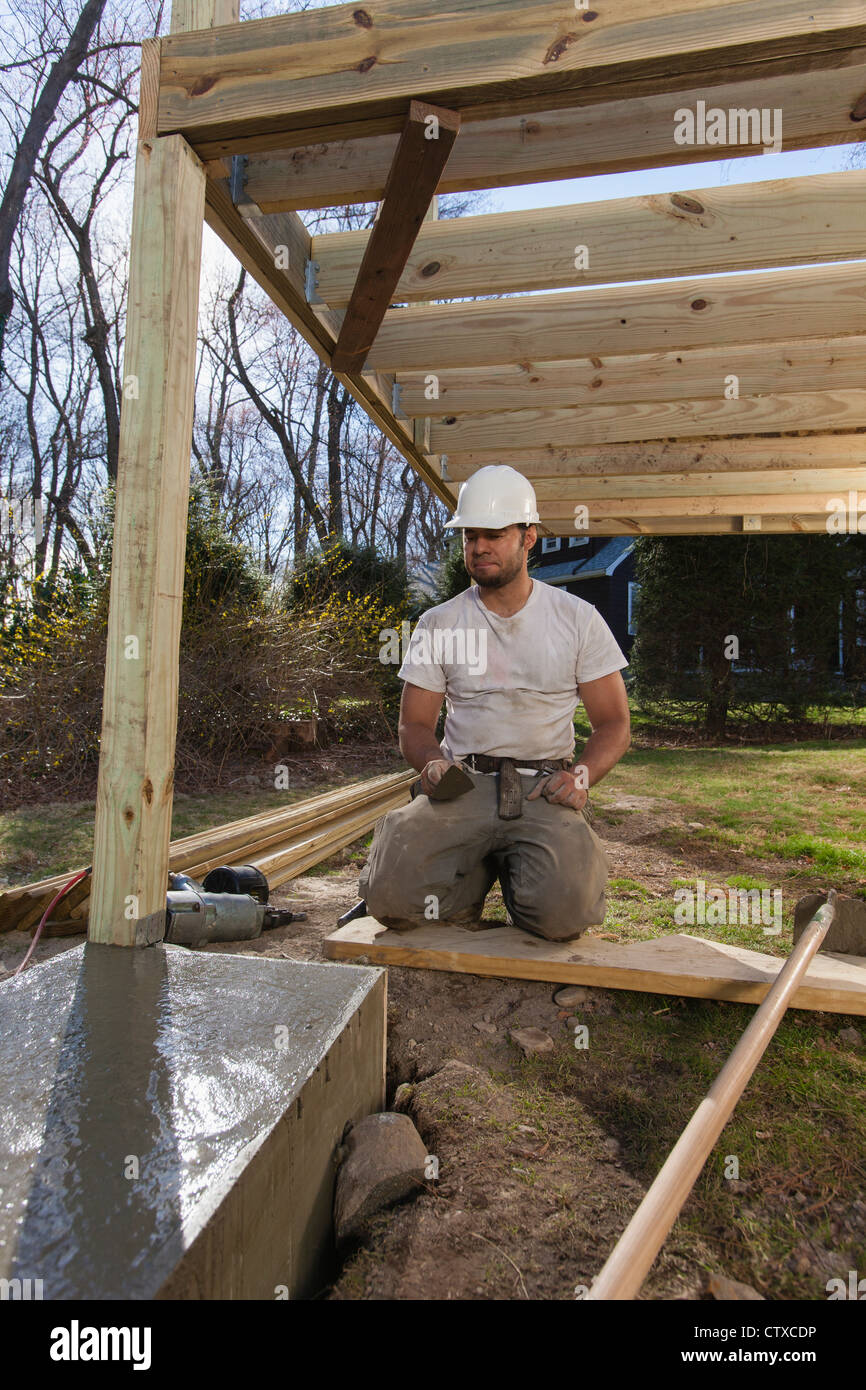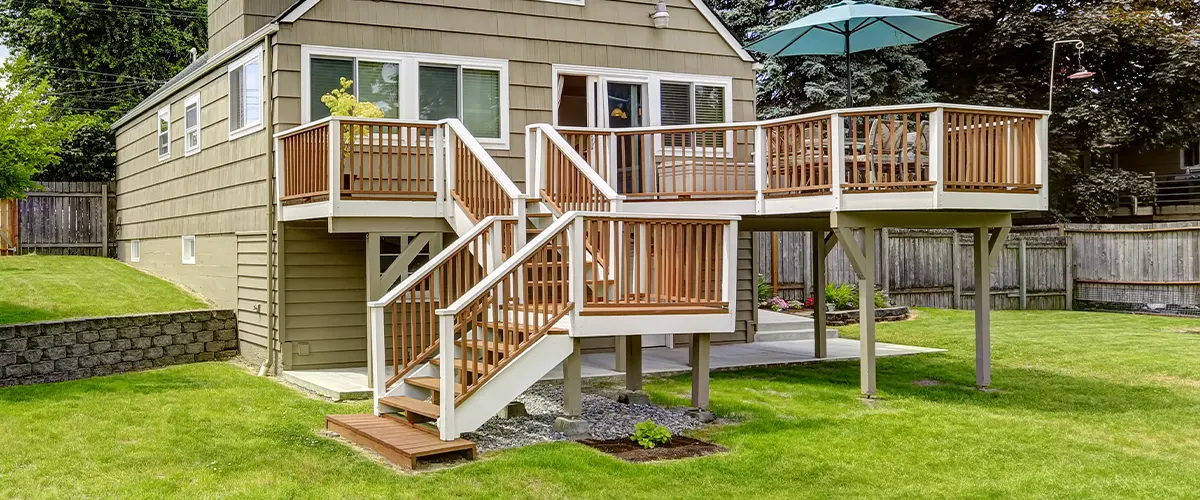Picking the Right Deck Footings for Stability and Resilience
The longevity and safety of your deck depend greatly on the type of grounds you choose, as they supply the necessary support and stability to hold up against the test of time. In this conversation, we will certainly discover the different kinds of deck footings, think about the vital variables to consider when making a choice, and delve right into the pros and cons of different options.
Sorts Of Deck Footings
These grounds consist of a cylindrical opening loaded with concrete, which gives a strong structure for the deck blog posts. Concrete pier footings are reasonably very easy to set up and offer exceptional stability, making them a popular option for numerous deck jobs.
These grounds are mounted by screwing them into the ground, which creates a protected foundation for the deck. They likewise allow for very easy modification and progressing of the deck if required.
Alternatively, some contractors choose precast concrete grounds. These footings are constructed from sturdy concrete and be available in various sizes and shapes to suit various deck styles. Precast concrete grounds are practical to mount and supply a secure base for the deck framework.
Finally, one more option is the post-in-anchor ground system. This type of ground involves driving a steel anchor into the ground and attaching it to the deck article. It provides flexibility in regards to placing the deck messages and is suitable for decks with lightweight frameworks.
When selecting the best sort of deck footing, it is vital to take into consideration variables such as soil conditions, deck tons, and neighborhood building regulations (Deck Footings). Consulting with a professional specialist or architectural engineer can assist ensure the ideal footing is selected for a stable and risk-free deck
Elements to Think About When Picking Footings
When choosing the proper footings for a deck, it is critical to meticulously think about numerous variables such as soil conditions, deck tons, and adherence to regional structure codes. These variables play a significant role in making sure the security and resilience of the deck structure.
The kind of soil on which the deck will be built identifies the type of footings required. On the various other hand, decks developed on clay or extensive soils may require footings that can fit the soil's tendency to increase and contract.
An additional important variable is the deck tons. The weight of the deck, including the products used and any type of prospective online lots such as furnishings or events, should be taken into account when picking footings. The footings need to be created to birth the weight of the deck and distribute it equally to avoid any type of structural concerns or failings.
Last but not least, adherence to regional building regulations is critical. Building ordinance differ from region to region, and it is vital to follow the certain requirements established by the regional authorities. Deck Footings. These codes guarantee that the deck is constructed safely and fulfills the required criteria for architectural stability and load-bearing ability
Concrete Footings: Cons and pros

Concrete grounds offer several advantages and drawbacks when utilized as the foundation for a deck. On the positive side, concrete grounds supply superb security and resilience.
One more advantage of concrete grounds is their versatility. They can be put right into various forms and dimensions to accommodate different deck styles and setups. Concrete footings can be customized to fit the specific needs and requirements of the deck structure.
Nonetheless, there are additionally some downsides to utilizing concrete footings. One significant downside is the expense and labor associated with their installment. Concrete grounds need excavation and usually need the assistance of hefty equipment. This can enhance the overall price of the deck task and might need professional aid.

Helical Piers Vs. Sonotubes: Which Is Much better?
In considering the foundation choices for a deck, the contrast in between helical piers and sonotubes is essential in figuring out the exceptional choice. Helical piers, likewise understood as screw piles, are steel shafts with helical plates connected to them. They are twisted into the ground making use of hydraulic machinery, offering a resilient and secure structure for the deck. On the various other hand, sonotubes are round kinds constructed from cardboard or fiber product that are full of concrete. They are put in an opening went into the ground and provide assistance for the deck.
When it involves security and longevity, helical piers have the upper hand. The helical plates on the piers develop a solid hold with the soil, moving or preventing any activity of the deck. This is specifically useful in areas with unsteady or changing dirt conditions. Sonotubes, on the various other hand, depend exclusively on the concrete filling up for security, which may not supply the exact same degree of strength and resistance.
In terms of setup, helical piers are reasonably much easier and faster to set up contrasted to sonotubes. The hydraulic equipment used to twist the piers right into the ground guarantees a effective and quick process. Sonotubes, on the various other hand, call for digging openings and putting concrete, which can be lengthy and labor-intensive.
Furthermore, helical piers are a more functional option. If needed, they can be made use of in numerous soil conditions and can be readjusted or strengthened. Sonotubes, on the other hand, may require extra assistance, such as rebar, in certain soil conditions or locations with high tons requirements.
Picking the Right Footings for Your Deck's Dimensions
For ideal my site structural honesty, it is necessary to meticulously select the suitable grounds that align with the measurements of your deck. The dimensions of your deck, including its size, length, and elevation, play a considerable role in establishing the type and size of footings called for.
When choosing footings for your deck, it is very important to consider the load-bearing capacity of the dirt. The weight of the deck, incorporated with the weight of any furniture or people on it, applies a significant pressure on the footings (Deck Footings). Consequently, it is important to select grounds that can effectively support this weight without shifting or sinking with time.
Larger decks with better dimensions call for larger footings to give enough security and assistance. The shape of the footings, whether they are round or square, depends on the layout and layout of the deck.
Verdict
To conclude, selecting the right deck grounds is important for making sure security and toughness. Aspects such as the kind of grounds, the deck's measurements, and the advantages and disadvantages of different alternatives need to be considered. Concrete grounds supply stamina and longevity, but might you can try these out be much more lengthy and expensive to mount. Helical piers and sonotubes have their very own benefits and drawbacks. Eventually, picking the ideal footings for your deck's certain requirements is necessary for a successful and lasting framework.
These footings are composed of a cylindrical hole filled up with concrete, which provides a solid foundation for the deck posts. Concrete pier grounds are fairly simple to set up and supply superb stability, making them a preferred option for numerous deck tasks.
Precast concrete grounds are hassle-free to install and offer a stable base for the deck structure.
It supplies adaptability in terms of positioning the deck articles and is ideal for decks with lightweight frameworks.
Concrete footings offer numerous advantages and disadvantages when utilized as the foundation for a deck.